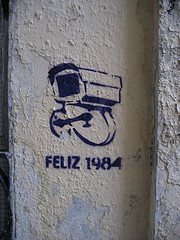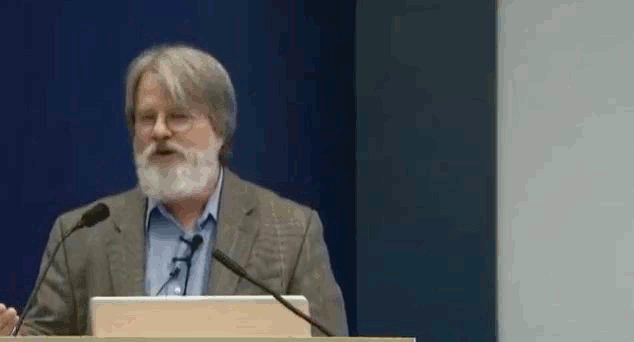 Just as I was thinking of getting back to the founts of MOOCy goodness last week, Twitterous serendipity occurred yet again and voila, I am now enrolled on the Data Analytics and Learning course from Texas University Arlington via EdX’s Honour Code route no less. The course proper does not commence until Monday (so still time to follow me in;) but we’ve already been treated to some induction materials over the weekend…(Available separately on G+ and YouTube).
Just as I was thinking of getting back to the founts of MOOCy goodness last week, Twitterous serendipity occurred yet again and voila, I am now enrolled on the Data Analytics and Learning course from Texas University Arlington via EdX’s Honour Code route no less. The course proper does not commence until Monday (so still time to follow me in;) but we’ve already been treated to some induction materials over the weekend…(Available separately on G+ and YouTube).
My discerning MOOCer palate has been tempted this time for two reasons:
- I find institutional/governmental collection of vast amounts of personal data and their use of data analytics to “improve my experience” extremely creepy – in a Big Brother 1984 way. If you know me from PLN seminar, you know my tendency for such doomsday scenarios;). But I am also a (recovering)scientists and so it is almost impossible for me to refuse a chance to play with some numbers and new analytical tools.
- The MOOC design itself is intriguing – very explicitly trying to combine the more usual, linear xMOOC paradigm with the more open, social-learning-focused cMOOC. I have sampled a range of courses aiming for a version of the latter, so again I could not resist having a taste here. Especially that these guys are trying out some new tools to facilitate social interaction within both models. Oh – and since the “social learning” aficionado (and, apparently, also a learning data analytics guru), George Siemens (@gsiemens) , is the lead here, we are guaranteed an interesting ride!
In the words of the man himself (there will no doubt be more words on the topic on his elearnspace blog here):
“I think that in the MOOC landscape we too prematurely settled on the instructional model that we have and we really want to take an opportunity with this course to ask a range of questions and experiment with different ways of making learning happen in different contexts. So we are experimenting with social learning, with different support structures and software…” (DALMOOC Induction video 1)
Shouldn’t forget George’s collaborators on the project:
- Carolyn Rose of Carnegie Melon Institute (innovator in such funky topic as Automated Analysis of Collaborative Learning Processes and Dynamic Support for Collaborative Learning and the person behind Bazaar and Quick Helper support system implementation within the course’s structured EdX platform. Having had designed and supported collaborative work online before – this is certainly of interest to me:)
- Dragan Gasevic (@dgasevic) of Athabasca University (into applying semantic web principles to elearning systems and a father to the newly minted “credentialing pipeline” Prosolo tool to be used in the social layer of the course)
- Ryan Baker (@BakerEDMLab) of Columbia University (looking at data mining intersection with human-computer interaction, and seemingly particularly interested in student’s motivation, or rather lack thereof, e.g. “WTF behaviour”, in the interaction with elearning systems).
The induction materials so far have been heavily focused on showing us around the dual layer course model and the introduction to the learning tools expanding the usual EdX set of forums and videos.
 Central to this introduction is “visual syllabus” designed as an intuitive overview of the complex course design and an introduction to the less-traditional social learning layer of the course by Matt Crosslin (@grandeped) of LINK Research Lab. Great idea but perhaps needs a tweak or two:
Central to this introduction is “visual syllabus” designed as an intuitive overview of the complex course design and an introduction to the less-traditional social learning layer of the course by Matt Crosslin (@grandeped) of LINK Research Lab. Great idea but perhaps needs a tweak or two:
- Less emphasis on esthetics of the design and more on information – e.g. including header text alongside more informative images so that we actually do get an overview without having to roll over pics?
- As Matt explains in the induction hangout, the aim is to particularly focus on introducing the non-traditional, unstructured, “social learning” layer of the course, getting away from assumptions of learner’s zero prior knowledge at the point of entry. Yet the learner’s progress through the overview is highly structured through the prominent numbering of the sections, therefore falling back onto the traditional paradigm and assumptions of linear progress through materials. Adding text headers, even alongside the numbers, would instantly change this first impression and allow for choice of point of entry, especially for those learners who have already dabbled in non-traditional courses before;)
A brief comment on the first impressions of the tools we are going to be using to support our learning:
- In the structured/linear layer (the blue pill) we have a couple of tools, Quick Helper and Bazaar, which seem to target the usual problem with massive courses – the sheer volume of people and messages and lack of more intimate collaborative learning experience which in f2f sessions may be achieved by simply turning to your neighbour in the classroom. Both are using automation, text analysis and algorithmic approaches to facilitate interactions. My immediate reaction (and some of my colleagues I discussed this with) is that while the tools may indeed help those students with less sophisticated online collaboration skills to find support within the EdX system, they do nothing for their online networking skill development. A couple more specific issues with each. Quick Helper’s “help matching intervention” system of targeting your forum questions to specific students/helpers may result in undue workload for students algorithm deems “an expert” and resentment if help is not provided (perhaps allow people to opt out/into the helper role?). Bazaar allows for spontaneous creation of collaborative/discussion groups, discussion aided by “virtual agent”. As @gsiemens pointed out in the induction hangout – it is a bit like Chatroulette, but with less nudity…Well, the analogy pretty much says it all.
- So – not that excited about the aids to the structured layer of the course but then, I usually tend to live outside the course VLEs anyway, in the red pill territory. The course’s expectation of setting up and using our own learning and networking spaces is more up my alley:) and I am a bit excited about using the prototype of “credentialing pipeline”, Prosolo, which is supposed to help us create, share and assess each others’ artifacts and form interest networks.
More on the course design etc. from the horses’ mouths:
- George Siemen’s blog summary of the design
- Matt Crosslin’s series on design decisions as they happened
Now – despite all this “constructive criticism” – I do look forward to taking part. No doubt I will be pleasantly surprised…off to try my hand at the educational Chatroulette:)
Image source: Diodoro under CC license










